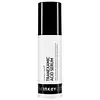What's inside
What's inside
 Key Ingredients
Key Ingredients

 Benefits
Benefits

 Concerns
Concerns

 Ingredients Side-by-side
Ingredients Side-by-side

Water
Skin ConditioningButylene Glycol
HumectantGlycerin
HumectantAscorbyl Glucoside
AntioxidantTranexamic Acid
AstringentEuterpe Oleracea Fruit Extract
1-Methylhydantoin-2-Imide
Skin ConditioningSodium Acrylates Copolymer
Phenoxyethanol
PreservativeCarbomer
Emulsion StabilisingSodium Hydroxide
BufferingCetearyl Olivate
Benzyl Alcohol
PerfumingSorbitan Olivate
EmulsifyingHydroxyethyl Acrylate/Sodium Acryloyldimethyl Taurate Copolymer
Emulsion StabilisingLecithin
EmollientSqualane
EmollientEthylhexylglycerin
Skin ConditioningSodium Gluconate
Skin ConditioningPolysorbate 60
EmulsifyingDehydroacetic Acid
PreservativeLactobacillus Ferment
Skin ConditioningSorbitan Isostearate
EmulsifyingWater, Butylene Glycol, Glycerin, Ascorbyl Glucoside, Tranexamic Acid, Euterpe Oleracea Fruit Extract, 1-Methylhydantoin-2-Imide, Sodium Acrylates Copolymer, Phenoxyethanol, Carbomer, Sodium Hydroxide, Cetearyl Olivate, Benzyl Alcohol, Sorbitan Olivate, Hydroxyethyl Acrylate/Sodium Acryloyldimethyl Taurate Copolymer, Lecithin, Squalane, Ethylhexylglycerin, Sodium Gluconate, Polysorbate 60, Dehydroacetic Acid, Lactobacillus Ferment, Sorbitan Isostearate
Water
Skin ConditioningButylene Glycol
HumectantAlpha-Arbutin
AntioxidantAscorbyl Glucoside
AntioxidantGlycerin
Humectant1,2-Hexanediol
Skin ConditioningSodium PCA
HumectantPPG-26-Buteth-26
Skin ConditioningCarbomer
Emulsion StabilisingPEG-40 Hydrogenated Castor Oil
EmulsifyingHydroxyacetophenone
AntioxidantSodium Hydroxide
BufferingSodium Polyacrylate
AbsorbentMagnesium PCA
HumectantCitrus Limon Fruit Water
MaskingDisodium EDTA
Sodium Hyaluronate
HumectantZinc PCA
HumectantDiethylhexyl Syringylidenemalonate
Skin ProtectingCitric Acid
BufferingManganese PCA
HumectantPhenoxyethanol
PreservativeCaprylic/Capric Triglyceride
MaskingPotassium Sorbate
PreservativeCitrus Aurantium Peel Oil
Limonene
PerfumingPinene
MaskingCI 14700
Cosmetic ColorantCI 15985
Cosmetic ColorantWater, Butylene Glycol, Alpha-Arbutin, Ascorbyl Glucoside, Glycerin, 1,2-Hexanediol, Sodium PCA, PPG-26-Buteth-26, Carbomer, PEG-40 Hydrogenated Castor Oil, Hydroxyacetophenone, Sodium Hydroxide, Sodium Polyacrylate, Magnesium PCA, Citrus Limon Fruit Water, Disodium EDTA, Sodium Hyaluronate, Zinc PCA, Diethylhexyl Syringylidenemalonate, Citric Acid, Manganese PCA, Phenoxyethanol, Caprylic/Capric Triglyceride, Potassium Sorbate, Citrus Aurantium Peel Oil, Limonene, Pinene, CI 14700, CI 15985
 Reviews
Reviews

Ingredients Explained
These ingredients are found in both products.
Ingredients higher up in an ingredient list are typically present in a larger amount.
Ascorbyl Glucoside is a stable form of Vitamin C. It is created by combining glucose from starch.
When applied to skin, Ascorbyl Glucoside turns into Ascorbic Acid.
Ascorbyl Glucoside is an antioxidant. Antioxidants help fight free-radicals, or molecules that may damage skin cells.
It can help to reduce redness, improve skin texture, reduce the effects of aging, reduce the visibility of dark spots, and brighten skin.
Read more about other types of Vitamin C:
Learn more about Ascorbyl GlucosideButylene Glycol (or BG) is used within cosmetic products for a few different reasons:
Overall, Butylene Glycol is a safe and well-rounded ingredient that works well with other ingredients.
Though this ingredient works well with most skin types, some people with sensitive skin may experience a reaction such as allergic rashes, closed comedones, or itchiness.
Learn more about Butylene GlycolCarbomer is a polymer of acrylic acid. Its main role is to create a gel consistency.
A high amount of carbomer can cause pilling or balling up of products. Don't worry, most products contain 1% or less of carbomer.
Glycerin is already naturally found in your skin. It helps moisturize and protect your skin.
A study from 2016 found glycerin to be more effective as a humectant than AHAs and hyaluronic acid.
As a humectant, it helps the skin stay hydrated by pulling moisture to your skin. The low molecular weight of glycerin allows it to pull moisture into the deeper layers of your skin.
Hydrated skin improves your skin barrier; Your skin barrier helps protect against irritants and bacteria.
Glycerin has also been found to have antimicrobial and antiviral properties. Due to these properties, glycerin is often used in wound and burn treatments.
In cosmetics, glycerin is usually derived from plants such as soybean or palm. However, it can also be sourced from animals, such as tallow or animal fat.
This ingredient is organic, colorless, odorless, and non-toxic.
Glycerin is the name for this ingredient in American English. British English uses Glycerol/Glycerine.
Learn more about GlycerinPhenoxyethanol is a preservative that has germicide, antimicrobial, and aromatic properties. Studies show that phenoxyethanol can prevent microbial growth. By itself, it has a scent that is similar to that of a rose.
It's often used in formulations along with Caprylyl Glycol to preserve the shelf life of products.
Sodium Hydroxide is also known as lye or caustic soda. It is used to adjust the pH of products; many ingredients require a specific pH to be effective.
In small amounts, sodium hydroxide is considered safe to use. However, large amounts may cause chemical burns due to its high alkaline.
Your skin has a natural pH and acid mantle. This acid mantle helps prevent harmful bacteria from breaking through. The acid mantle also helps keep your skin hydrated.
"Alkaline" refers to a high pH level. A low pH level would be considered acidic.
Learn more about Sodium HydroxideWater. It's the most common cosmetic ingredient of all. You'll usually see it at the top of ingredient lists, meaning that it makes up the largest part of the product.
So why is it so popular? Water most often acts as a solvent - this means that it helps dissolve other ingredients into the formulation.
You'll also recognize water as that liquid we all need to stay alive. If you see this, drink a glass of water. Stay hydrated!
Learn more about Water